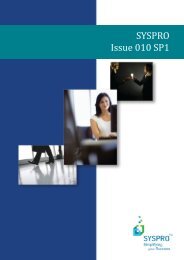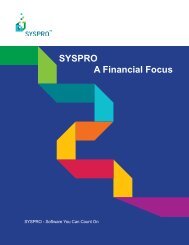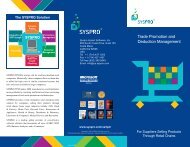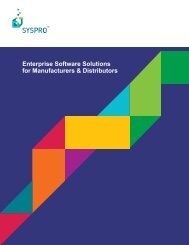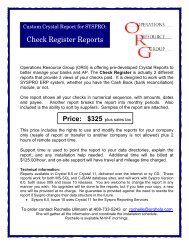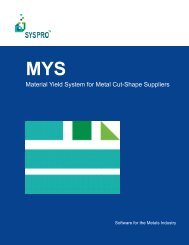Teach Yourself e.net - Syspro
Teach Yourself e.net - Syspro
Teach Yourself e.net - Syspro
You also want an ePaper? Increase the reach of your titles
YUMPU automatically turns print PDFs into web optimized ePapers that Google loves.
iii.Internal to custom application using e.<strong>net</strong> solutions: When a custom application is<br />
programmed to identify and handle errors internally, the application can raise an<br />
exception internally.<br />
When an exception is raised an exception number and an exception message are generated.<br />
Messages are defined in a set of text files with the extension *.IMP residing in the<br />
\programs\ folder of the SYSPRO 6.0 directory. The message files are organized in a<br />
modular manner matching the logical product areas of SYSPRO and are language specific.<br />
This logic is reflected in the naming convention used for message files, as follows:<br />
[MSG] [logical area][language code].IMP<br />
Where:<br />
[MSG]<br />
[logical area]<br />
[language code]<br />
An abbreviation of the word "Message".<br />
Is a logical area of the product.<br />
A number corresponding to a language selection passed by<br />
Utilities.Logon method at the start of the session (see<br />
Table 9.1, “Language Code Examples” [9–3]).<br />
If a language code is passed but no corresponding message file is found then<br />
the system will revert to using "EN", English. If a language code of zero is<br />
passed to the Utilities.Logon method then the SYSPRO operator's<br />
default language code will be used.<br />
Table 9.1, “Language Code Examples” [9–3] provides examples of language codes<br />
shipped with SYSPRO. Any ISO 693-1 standard language code can be applied by<br />
development.<br />
9–2



